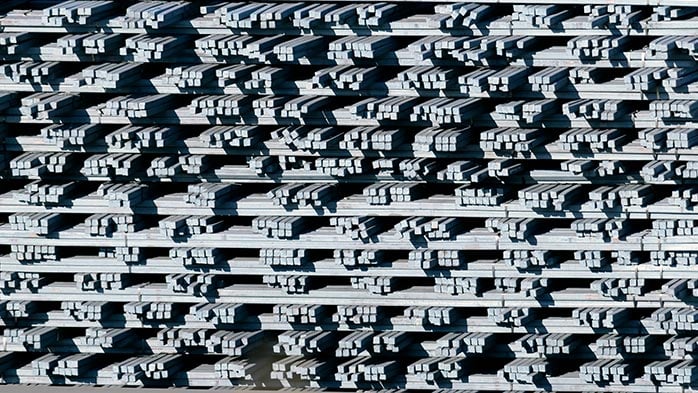At the start of each year, CRU continues to feature top expectations and outliers for the year ahead. This annual list of expectations is a thought piece, meant to stimulate internal discussions, scenario analysis, and strategic planning around potential risks to the markets we cover. This 2023 edition covers six expectations and three potential outliers.
Last year’s expectations
Perhaps the best place to start for our expectations and potential outliers for 2023 is by reviewing our ‘top calls’ for 2022. Last year, we covered 10 expectations which are listed below.
Seven of these ten were realised. Perhaps the most important was the expectation that prices would fall towards cost. The industry, as a whole, at the end of last year found this to be the most contrarian view. A few of the other expectations did not get fully realised – i.e., La Niña did not fully disrupt the steel supply chain. This weather phenomenon is now in a rare third year, and it is possible to still be a factor in early 2023. While no significant disruption was recorded in 2022, one might argue that floods in Australia – which have limited coal production and exports in late 2022 – may qualify here as coming to fruition.
Our expectations for 2023
Metallics demand is in a bull market
Global metallic markets will rebound from late-2022 lows due to a multitude of factors. One such factor is the new EAF-based steelmaking capacity coming online – particularly the ramp up of newly built capacity in the USA. Globally, metallics supply will tighten as new EAF’s come online while at the same time, BF-based producers use more scrap in their BOF mix to lower emissions.
Due to this demand increase, some regions may enact export controls for steel scrap or other metallics. Traditional pig iron supply will remain limited due to the war in Ukraine as well as sanctions or tariffs on Russian supply. However, India – with the elimination of the temporary export duties – will gain significant share in the merchant pig iron market.
Easing of pandemic restrictions in China will lead to stronger y/y demand for steel and steelmaking raw materials
Near the end of 2022, China already eased pandemic restrictions at a faster pace than anticipated. We expect this easing will continue to lead to increased economic activity and renew demand for steel and steelmaking raw materials. Although construction activity in China will remain under pressure and limit the growth rate of overall steel consumption, there is a possibility the government may provide new backing to this sector if economic performance disappoints. This would further support the steel market.
Renewable energy becomes a visible driving force for steel demand across multiple continents
Recent legislation in the USA – the Inflation Reduction Act (IRA) – is seen as a major driving force of a new upcycle in capital expenditures. This legislation led to immediate announcements of new investment into factories supporting the electric vehicle supply chain and solar panel production among others. In addition, a production tax credit for new wind power, and an investment tax credit for new solar facilities are among the details of this legislation which will directly support new steel demand over the coming years. We expect to see some benefit for steel demand in the USA in 2023, yet the biggest impact may be momentum building for a multiyear upcycle of new capex. Potentially, the initial success of this legislation will lead to other regions to adopt the same style of investment stimulus.
Global automotive production will increase, and with it, steel sheet demand
Global automotive production has been stunted since early 2021 by supply chain bottlenecks and the lack of key components – primarily semiconductors. While production did increase y/y in 2022, it remains well below demand and due to this, net vehicle inventory remains well below historic levels.
We have seen supply chain disruptions easing and due to this, improved vehicle production rates over the past several months. However, overall production remains well below typical levels. We expect that as 2023 proceeds, vehicle production will continue to increase as component shortages further ease, supporting demand for steel sheet. While rising interest rates will temper new vehicle purchase in some markets, fleet sales and the rebuilding of inventory will continue to support automotive production throughout all of 2023.
European energy prices remain volatile and higher than historic levels
Clearly, high energy prices in Europe will negatively affect consumer spending and economic activity. In addition, higher energy prices in Europe relative to other regions, will also weaken the competitiveness of domestic manufacturers. The most severe combination of factors such as colder-than-normal temperatures for an extended period, coupled with extremely high prices, would lead to an economic crisis. In addition, any implementation of government-led price controls would not allow market prices to properly affect demand which could lead to a shortage and potentially a humanitarian crisis.
If energy prices remain higher for longer in this ‘new normal’ energy environment, European steel demand would potentially fall to lower-than-expected levels. While the economic downside risk is quite extreme, this is not CRU’s expectation. We expect that energy prices remain volatile and higher than historic levels. And while CRU forecasts Dutch TTF gas prices will reach an annual peak in 2023, they will not surpass peak daily prices reached in 2022.
Steelmaker margins continue to ease from 2021–22 with some regions returning to low-to-no profit levels
Slower industrial growth, if not an outright recession, across multiple key regions such as Europe and North America will further depress steel demand. In 2022, steel production and mill shipments were lower y/y versus 2021 in most regions. Yet even with this, mill profitability remained higher than its historic levels due to high contract prices, and even spot prices remained well above costs for most of the year. In North America, supply growth will again exceed demand growth which will limit the need for overseas imports. This combination of slower industrial growth and well-supplied markets will pressure mill margins with some regions returning to unsustainably low levels.
Potential outliers in 2023
The following are notable outliers in this thought piece. At least one is rather broad and could happen in any year, while the others are more specific. Regardless, the following outliers are worthy of thinking about in a scenario analysis to understand the impact on the market or for a particular business.
China’s post pandemic easing: Risks abound
China’s re-emergence from Covid-19 lockdowns may again create a global logistics bottleneck for materials, manufactured goods, and ocean freight. Over the past few months, the Chinese government enacted strict lockdowns which limited not only demand for goods in China, but also the production of goods bound for export to the global market. If the sudden easing of these lockdowns leads to stronger economic growth in China, another supply chain interruption may emerge. However, any new supply chain bottleneck that comes may only be a limited replica of the 2020-21 supply chain crisis as other global economies are slowing.
On the downside, China is quickly easing lockdowns without the wide adoption of MRNA-based vaccines. This could potentially lead to new variants which could continue to negatively affect global economic activity.
Oil prices will remain historically high, with or without changes to Russian supply
Global oil demand continues to rise as weaker economic growth has only slowed demand growth. Meanwhile, global oil inventories are at multi year lows, while spare capacity is limited. The IEA now estimates demand to surpass prior peak levels as it rises to nearly 104 million barrels a day by the end of 2023. In addition to this demand growth, an inventory rebuild may become the largest source of consumption growth. If an inventory rebuild comes alongside stronger end demand growth, oil prices will remain historically high, even with full access to Russian supply.
Any strong rebound in oil prices may further support steelmaking costs as well as overall inflation, higher rates, and lower economic growth. However, if prices are seen to remain substantially high, new steel-intensive capex investments will take place which will support steel demand in some markets, such as OCTG products in the USA.
A disaster – be that natural or created by humans – may temporarily disrupt steel supply chains
Admittedly, this is a broad scenario. Yet commodity supply is very well matched with demand. Any mismatch where supply cannot meet demand leads to rapid price increases as demand is often inelastic to price changes. A natural disaster such as a volcanoes, earthquakes, flood, extreme cold, tornados, or the sudden closure of a key route of transit will have an outsized effect on material prices.
The war in Ukraine for example, could lead to such an issue for manganese alloy production. If these facilities undertook serious damage and an extended outage took place, manganese alloy would be in a shortage and some steel producers would not be able to procure supply. The war and sanctions could also escalate and lead to a long-lasting disruption to Russian exports of steel and various steelmaking raw materials. Alternatively, if the war was to quickly de-escalate, steel demand may surge for rebuilding.
















